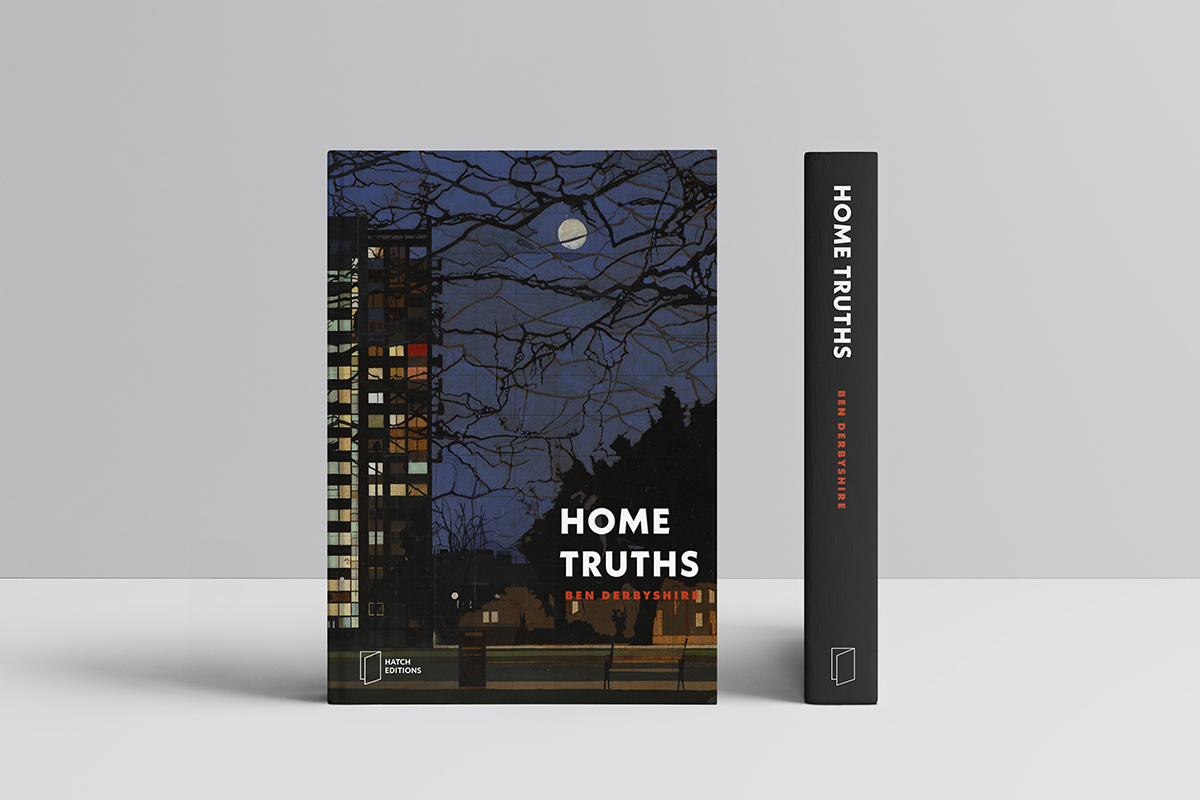You are viewing 1 of your 1 free articles
‘Residents will not engage effectively on design issues until their future security is addressed’: an extract from Ben Derbyshire’s new book Home Truths
Architect Ben Derbyshire’s new book, Home Truths, aims to provide a guide to residential architecture with insights from 50 years of practice. Inside Housing today publishes an extract from that book
Unless efforts are made to garner support, development and urban regeneration can struggle in the headwind of opposition. Treating residents with respect must underpin the approach to engaging with them, while just as important is clear, open and honest articulation of the possibilities, risks and downsides of development – disruption, especially.
It is necessary to engage a wide variety of stakeholders – local residents and businesses, the local council and its development partners – to form a consensus across a range of issues, including the key development or regeneration objectives and how best to achieve them. The impact of development can be quite widespread; its influence reaches much further than the building site, both geographically and socio-economically, into the wider urban context. There is no one simple strategy that will achieve this, and to try to shortcut the proper examination of issues and options is to invite opposition, delay and potential failure.
“Residents will not engage effectively on design issues until their future security is addressed”
Rather, setting out a series of alternative approaches and appraising these in an open, transparent fashion builds confidence in decision-making and dispels myths. This process must recognise the legitimate interests of the various stakeholder groups, as diverse as existing residents and prospective investors, with their differing priorities and preferences. The gains from regeneration can be considerable, but the costs and risks need to be aired. Thus the prospectus for investment should be clearly established for all groups – whether it is investment of time, hope and collaborative effort from residents, or money from funders.
Appraising options – offering real choice
One potentially successful approach [to regenerating or redeveloping an estate] is option studies exploring a range of interventions: from doing nothing or just minimal intervention, through to significant development with larger gains in terms of new facilities and housing. Laying the ground in this way provides a good trail of evidence that the consultation was meaningful, open and collaborative. The options offered for consideration should be distinct and dissimilar.
“The prospect of upheaval can create considerable anxiety for households, and the stress is heightened in proportion to the degree of uncertainty at the early stages”
Options will test and compare the acceptability of distinct strategies for achieving prioritised outcomes: for example, redevelopment versus refurbishment, or various scenarios for the introduction of homes for private sale to increase the yield available to fund subsidised housing. Option appraisals are useful for exploring aspects that are not easily measurable as ranked priorities, and these should be given adequate status. If stakeholders care greatly about aesthetic considerations or the loss of familiar streetscapes or views, then these matters should be treated with appropriate weight. It is not just about money, and not everything can be assessed in financial and empirical terms.
The prospect of upheaval can create considerable anxiety for households, and the stress is heightened in proportion to the degree of uncertainty at the early stages. Conversely, prolonged exposure to the detail of proposed development induces consultation fatigue and results in poor levels of engagement. It is therefore unwise to begin consultation with affected groups over proposals that might prove unviable. Establishing the in-principle viability of a possible range of realistic options creates a useful starting point with which a suitably empowered resident community can engage. Thereafter, the options appraisal process should be carried out openly and in parallel with a structured engagement strategy.
Qualities of consultation
Consultation must be comprehensive, representative, open, carefully recorded and communicated widely at each stage.
A robust process will counter misinformation and withstand future challenge. Residents will not engage effectively on design issues until their future security is addressed. Often the best way to satisfy this prerequisite for meaningful engagement over design and other, more tangible questions is a residents’ charter. This can cover commitments on forms of tenure, management regimes and housing costs, as well as guarantees about the timetable, subjects for consultation, means of communication, openness, representation and access to the process. The programming of engagement should be paced so residents see continuous progress without feeling bulldozed on the one hand or ignored on the other.
“Residents will not engage effectively on design issues until their future security is addressed”
To begin with, simply establishing agreement about what is good and what is bad, no matter how obvious or obscure it may seem, draws stakeholders into the process. As with any brief, good information gathering forms a sound basis for design, and the early consultation stages will be concerned with flushing out any issues, both factual and anecdotal.
Training and support
Before meaningful engagement can begin, local people may need help to participate knowledgeably in the consultation process, especially on large or complex projects.
Few people have ever had to read building plans or elevations, and many cannot be expected to understand complex issues such as financial viability without training. Enabling workshops on such matters as interpretations of plans, space standards, tenure distribution, public realm, landscape design and the principles of development viability can be helpful.
Similarly, the appointment of a ‘residents’ friend’ can support local residents throughout the whole development process by helping to provide advice and guidance, offering the backup needed to enable informed decisions on issues that affect their homes and lives.
Engagement from macro to mini
Successful development will also deliver wider neighbourhood benefits – both physical improvements and positive socio-economic impacts. Not only do these need to be highlighted to stakeholders, but consultation needs to go further afield to neighbouring residents, businesses and other stakeholders such as local schools. This is commonly achieved through public exhibition and a variety of neighbourhood publicity and engagement tools, enhanced using digital techniques, taking advantage of the widespread access to the internet and cell-phone systems.
Regeneration involves a complicated project cycle, including procurement of development partners and contractors, ownership issues, phased decanting, construction and occupation, and of course the process of obtaining planning approval: all of these need to be explained and justified. Consultees will want to know about the impact on them and will demand timescales, which are often difficult to predict with accuracy; and the professional team need to explain any caveats or qualifications to the programme. As plans become more defined, stakeholders can be invited to make individual choices about new homes.
Ben Derbyshire’s book, Home Truths, is published by Hatch Editions
UPDATE: 3.3.2023
This article originally stated that Ben Derbyshire’s book Home Truths was published by RIBA - this is incorrect, the publisher is Hatch Editions
Sign up for our daily newsletter
Already have an account? Click here to manage your newsletters












